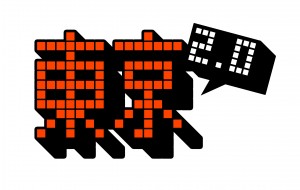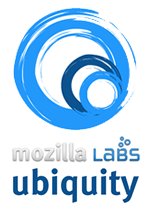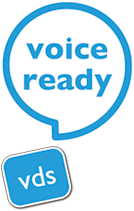 The GeeksOnAPlane Asia tour kicked off on Monday in Tokyo, with the group of mostly US-based geeks leaving today for Beijing. Former TechCrunch employee Mark Hendrickson already shared his views on the Japanese tech scene from an American perspective, giving me room to summarize (almost) all presentations the GoaP group witnessed in Tokyo (I myself am a Japan-based writer for the TechCrunch network).
The GeeksOnAPlane Asia tour kicked off on Monday in Tokyo, with the group of mostly US-based geeks leaving today for Beijing. Former TechCrunch employee Mark Hendrickson already shared his views on the Japanese tech scene from an American perspective, giving me room to summarize (almost) all presentations the GoaP group witnessed in Tokyo (I myself am a Japan-based writer for the TechCrunch network).
This means there is a lot of substantial stuff to cover, which is why I will do a two-part posting on the GoaP Tokyo leg (the second piece follows tomorrow). First on the list is Tokyo 2.0, a monthly web industry event that combines networking with a number of presentations and lightning talks (and regularly attracts an audience of about 200 people).
This time, a total of four presentations tried to shed light on the question of how language and the web can be interconnected and how this helps in the evolution of the web. Here is a quick summary of all the presentations held during Tokyo 2.0 this Monday.
Presentation 1: The application of NLP to ‘goo’ services (by Junji Tomita)
 Background and summary:
Background and summary:
Ranked at No. 10 in Alexa Japan, Goo is one of the biggest search engines and portal sites in Japan. Presenter Tomita introduced two NLP (natural language processing)-based tools developed by the company, ‘Blog Sentiment Analysis’ and ‘Blog Report Card’. The first tool is available to automatically understand emotions textually expressed within blog postings. It retrieves text from blogs, parses it (“This PC comes with a cool display.” as opposed to “This cool PC comes with a display.”) and then visualizes the processed data on a results page.
The report card tool grades your blog after you type in its URL based on four different factors, i.e. influence or diligence. Neat idea, but this appeared to be more of a gimmick to me.
Full video of the presentation (English and Japanese, 17:18 min):
http://www.ustream.tv/flash/video/1625173
Presentation 2: Ubiquity – Command the Web with Language by Michael Yoshitaka
 Background and summary:
Background and summary:
The GeeksOnAPlane (and myself) particularly enjoyed the great presentation delivered by Michael Yoshitaka on Ubiquity, a project launched by Mozilla Labs last year. Yoshitaka said Ubiquity, a Firefox add-on that unites textual commands acting as mashups for web services, helps users accomplish more online by combining the web with language.
The big idea is to use natural language for the commands, to make using Ubiquity as easy as possible. Let’s say you write an email in which you invite someone for dinner in the “Cyber Cafe” in San Francisco and want to include a map. Normally you would have to open a new tab, find a map somewhere and copy the link into the email text.
However, users can open Ubiquity right within the email tab, simply enter “map san francisco” in the text box and insert the Google map that pops up into the email text with a single keystroke (or select the name of the cafe and city and let the tool map it). Type the words “yelp cyber cafe san francisco” and Ubiquity offers you a JPEG that can be included right into the email text and shows the Yelp rating for that cafe. The whole process just takes seconds as you don’t have to access sites like Google Maps or Yelp anymore. It all happens within the browser tab that you currently work in.
Mozilla Labs itself labels Ubiquity an experiment and is currently working on localizing the tool. More on that and other Ubiquity-related stuff in Yoshitaka’s video or over on SlideShare.
Full video of the presentation (English and Japanese, made by Yoshitaka himself, 9:10 min):
http://vimeo.com/moogaloop.swf?clip_id=5091071&server=vimeo.com&show_title=1&show_byline=1&show_portrait=0&color=&fullscreen=1
Ubiquity: Command the Web with Language 言葉で操作する Web from mitcho on Vimeo.
Presentation 3: An online synthetic speech system, Voice Delivery System by Shinjyou Sunao
 Background and summary:
Background and summary:
Another presentation tickling the fancy of the GoaP group centered on VDS (Voice Delivery System), an API for synthetic speech generation developed by Tokyo-based Knowledge Creation [JP]. Targeted mainly at elderly and disabled web users, VDS lets owners of any site on the Internet add a “reading out” button. Press it and VDS makes sure the text content on the page will be read out loud for you. A total of 30 languages is currently supported.
Great stuff and the best thing is users are not required to download any software. Knowledge Creation offers a free version (for pages containing up to 5,000 characters) and several “pro” versions.
Full video of the presentation (English and Japanese, 13:20 min):
http://www.ustream.tv/flash/video/1625255
Presentation 4: Social Media and Translation – Bridging the Two Solitudes by Chris Salzberg
 Background and summary:
Background and summary:
Tokyo-based American Chris Salzberg, a writer and translator who used to work for international blog network Global Voices Online, spoke about the implications of multilingualism on the web. Salzberg argues that social media on one side and human languages on the other are nothing but materializations of different kinds of solitude.
He argues that community translation is the main key to bridge the gap between these disconnected parts, but couldn’t finish his presentation in time (which is why I embedded his slides below).
The video (Salzberg’s presentation in English and Japanese had to end after 11:30 min) can be found here.
Lightning Talks:
The lightning talks were held by four Japan-based web start-ups:
Popin‘s popIn Rainbow (an add-on for all major browsers that lets you search, compare prices, look up information on Wikipedia etc./video), Keireki (a Japanese-only community for “grown-ups”/slides), Eigobama (a site teaching English to Japanese by using speeches of Barack Obama/slides) and MyGengo (a human translation service currently covering four languages/video with MyGengo’s presentation starting at 5:30 min).
That was a lot of stuff to digest for the gaijin guests on their first night in Japan, but all the Tokyo 2.0 materials are put together nicely here for everyone to check out (I could only scratch the surface within the scope of this article). The GeeksOnAPlane had an even longer day during yesterday’s “Startonomics Tokyo” event, which I will try and summarize tomorrow in a separate post.
Tokyo 2.0 organizer Andrew Shuttleworth already announced another event for next month (topic: cloud computing). So please make sure you attend this (non-profit) event if you happen to be in Tokyo on July 13 and want to get in touch with the Japanese tech scene (if not, check out Tokyo 2.0’s Ustream page when it’s time).
Update:
Days two and three of the GoaP Tokyo leg are covered here.